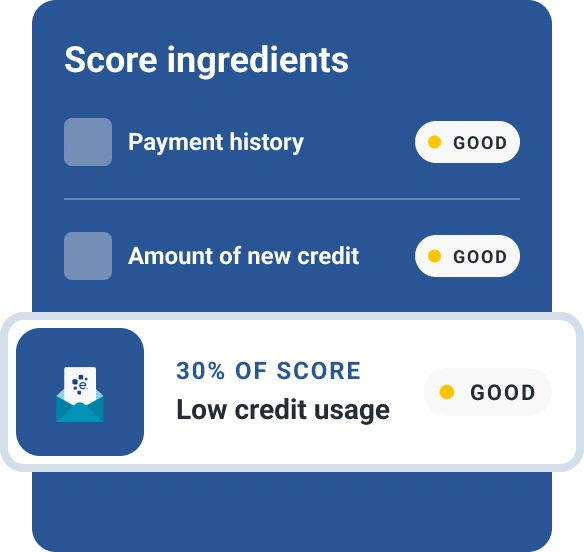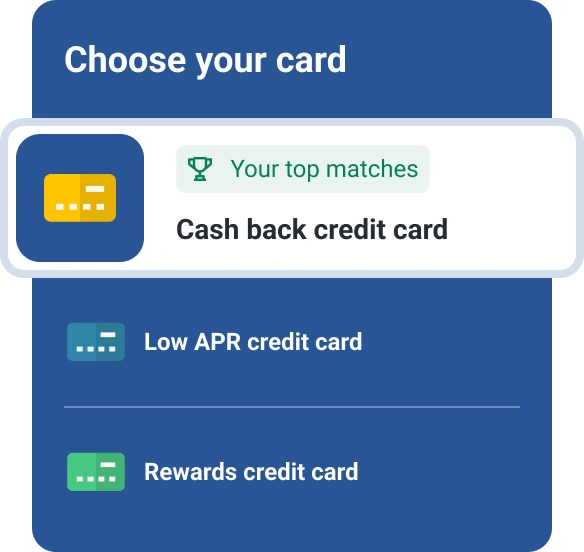How Much Credit Should I Use?

Credit cards are a great convenience and using them responsibly can help you build up a good credit score. But overusing them, like too much of any good thing, can have negative consequences. How do you find the right balance, literally and figuratively? Here's an overview.
What Is Credit Utilization?
One of the first things many of us learn about credit scores is that maxing out a credit card—having a balance equal to or greater than the card's borrowing limit—is bad news for your score. But those with the highest credit scores often have (and use) multiple credit cards every month. So how much usage is too much?
The key to knowing how much credit to use begins with understanding your credit utilization ratio. This ratio measures the percentage of your available credit you're using at a given time. To determine your credit utilization ratio, divide your current balance by your credit limit. So, for example, if you have a credit card with a borrowing limit of $6,500 and your balance is $1,500, the utilization ratio for that card is $1,500 divided by $6,500, or 0.23 (23%).
Credit scoring models such as those maintained by FICO and VantageScore® factor the utilization ratios for each of your credit cards into their calculations when determining your credit score. They also factor in your total utilization ratio: the sum of all your credit card balances divided by the sum of all your credit limits.
What's an Excellent Credit Utilization Ratio?
In general, the lower your credit utilization ratio, the better your credit score. Aim for a total utilization ratio, and ratios for each credit card, of no more than 30%. Your credit score will take a bigger hit once your utilization goes above that. People with exceptional credit scores (800 or higher on the FICO® ScoreΘ range of 300 to 850) tend to keep utilization under 10% for each card and for total credit card use.
How Does Credit Utilization Affect Your Credit Score?
Utilization plays a big role in determining your credit score: FICO® says it's responsible for about 30% of your FICO® Score, second only to payment history. High utilization can signal overborrowing, lack of borrowing capacity and potential difficulty making payments. Credit scoring systems may reflect that by lowering scores.
A low utilization, on the other hand, can show that you're managing your credit cards responsibly. Whether you have one credit card or many, maintaining low utilization with each card and overall is typically rewarded by the credit scoring models.
How Do I Reduce My Credit Utilization Ratio?
There are two ways to bring down your credit utilization ratio: reducing the outstanding balances on your credit cards and increasing your borrowing limits. Doing both at the same time can be highly effective.
Lower Your Card Balances
Paying down your credit balances (and avoiding new charges) will bring your utilization ratios down. If you have multiple credit cards, paying down any of your balances will reduce your total utilization, but you may be able to promote a credit score boost more quickly if you look at the utilization ratios for individual cards as well.
Consider the example in the table below, depicting three credit cards with a total utilization of 30%—a total usage level that could already be pulling credit scores significantly lower.
| Credit Limit | Balance | Utilization % | |
|---|---|---|---|
| Credit Card 1 | $5,000 | $1,900 | 38% |
| Credit Card 2 | $6,500 | $1,800 | 28% |
| Credit Card 3 | $8,000 | $2,100 | 26% |
| Total | $19,500 | $5,800 | 30% |
After accounting for the minimum payments on all three accounts, let's say you have $300 available to put toward your outstanding card balances. Using it to pay any one of the three card balances, or dividing it across two or all three, would reduce your total utilization to 28%—but putting the full $300 toward Card 1 will do that and lower the utilization on that card from 38% to 32%—a change that will tend to improve your credit score.
Increase Your Total Credit Limit
Another way to reduce utilization is to apply for a new credit card or ask for credit limit increases on the cards you already have. You won't know in advance how much credit they'll extend you, but any increase in borrowing limit will immediately lower your utilization ratio.
Your credit scores will take a small, temporary hit when the lender does a credit check in connection with your application for new credit—a process known as a hard inquiry. These drops in score typically recover quickly as long as you keep up with your bills.
If you're approved for a new credit card or higher limits on the cards you already have, then as long as you don't run up any additional new balances, you'll lower your utilization ratio. That, in turn, may promote higher credit scores.
Closing Credit Cards Can Increase Utilization
It might seem like closing a credit card you never use would help your credit score. However, if you have outstanding balances on one or more credit cards, closing an unused credit card account will increase your utilization ratio by reducing your total borrowing limit.
If your utilization percentage is in the low single digits, that may not matter much—and if all your card balances are zero, it won't matter at all. But if your total utilization is closer to 30%, closing the unused card could end up hurting your credit score.
If you're eager to get rid of an old card (because it has an annual fee you don't want to pay, for instance), consider getting a new card first. As long as the new card's credit limit equals or exceeds the old card's, it will compensate for the loss of the old card's credit limit.
Debt Consolidation Loans and Utilization
A strategy for reducing credit utilization rapidly is to use a personal loan to consolidate your credit card debt. Taking out a loan and using it to pay all or most of your outstanding credit card balances (or a large percentage of them) can reduce your utilization ratio to zero. This can save you money, because personal loans typically charge lower interest rates than credit cards.
This strategy obviously won't reduce your overall debt, but can still help your credit score improve relatively quickly because installment debt such as personal loans aren't included in utilization calculations. Just beware the temptation to run up new balances and utilization ratios on those freshly paid-off cards. If you start charging on them again, your utilization ratio—and your financial situation in general—will suffer.
Monitoring Your Credit Will Show Your Progress
There's no absolute best amount of credit to use to help improve your credit scores, but keeping your total utilization ratio and the ratios for each of your credit cards below about 30% will prevent serious reductions in credit score and promote score improvement.
To see how utilization may be affecting your credit scores, check your credit regularly. You can get free credit monitoring from Experian, which gives you access to your Experian credit report and FICO® Score, and alerts you when your credit file changes. AnnualCreditReport.com provides free credit reports from the three national consumer credit bureaus—Experian, TransUnion and Equifax—which can help you track all your credit reports.
Don’t apply blindly
Apply for credit cards confidently with personalized offers based on your credit profile. Get started with your FICO® Score for free.
See your offersAbout the author
Jim Akin is freelance writer based in Connecticut. With experience as both a journalist and a marketing professional, his most recent focus has been in the area of consumer finance and credit scoring.
Read more from Jim

